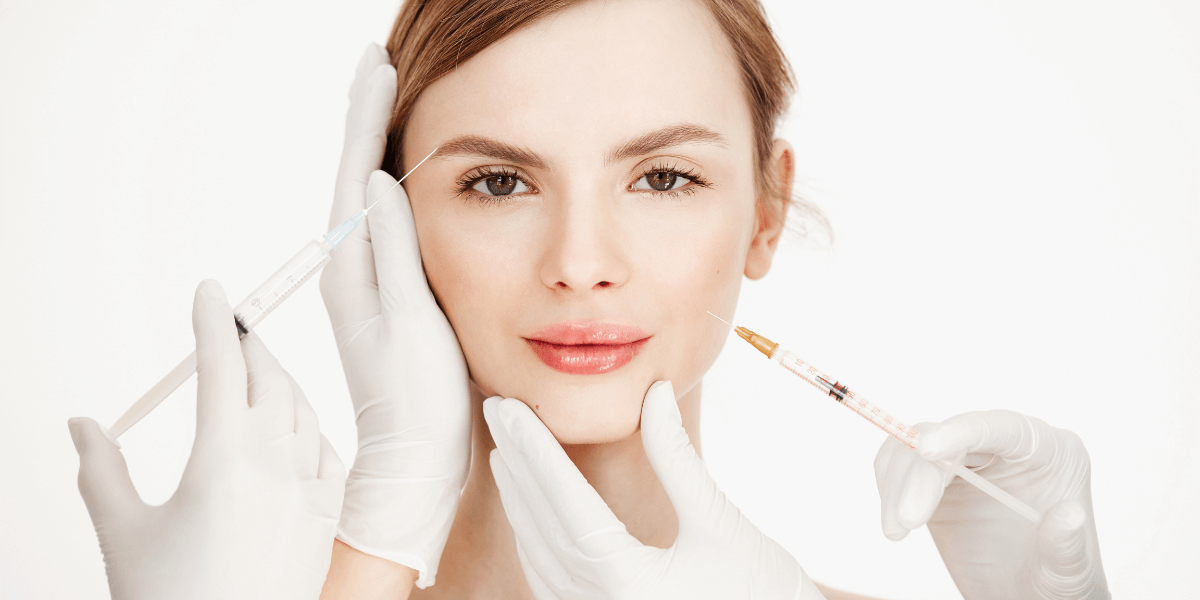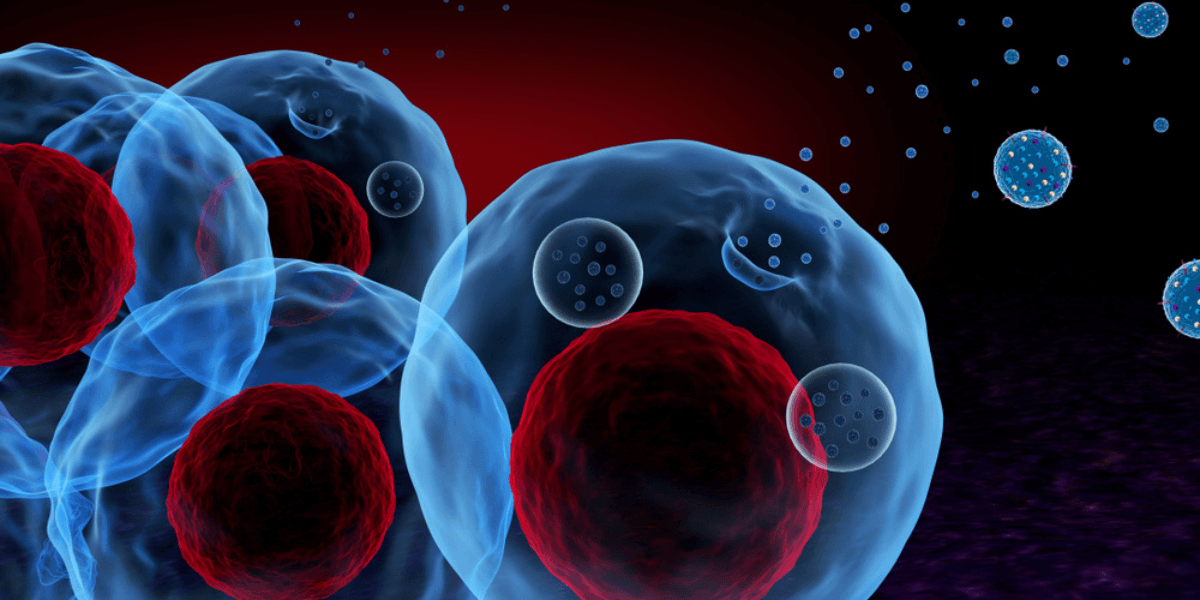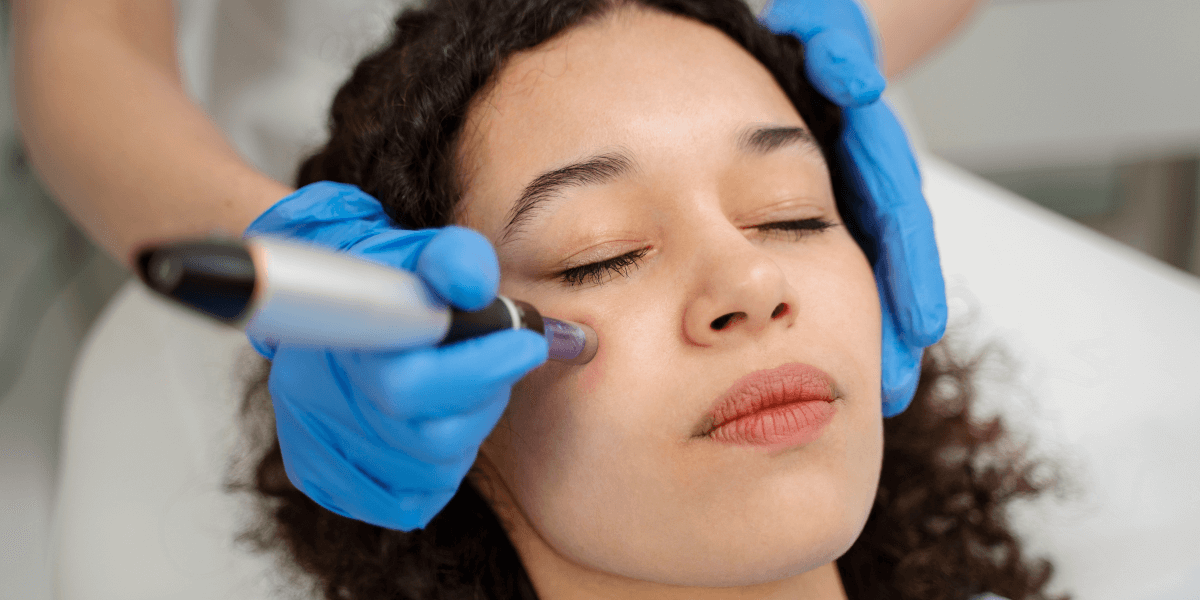A thread lift is a non-invasive anti-aging therapy that rapidly tightens and lifts the skin. It promotes neovascularization, which improves your appearance over time. A biodegradable polyester suture is used in thread lifts. They’re excellent for giving your skin a rejuvenated look and are very effective at raising sagging skin. Thread lift (or rhytidectomy) is a low-risk cosmetic procedure that produces almost no scarring and is an excellent alternative to facelift surgery. Thread lifts are meant to tighten your skin by putting medical-grade thread material in your face. The thread is then tightened to “pull” your skin up, rejuvenate it, and restore its youthful appearance. Several parts of your face, including your forehead, under-eye area, eyebrows, neck, cheeks, jowls, etc., can be treated through a thread lift. You can target one or multiple areas simultaneously for this treatment.
Why Is It Useful?
Thread lifts serve to increase collagen production, giving the skin a more youthful appearance. The threads reduce wrinkles and creases in the areas of your face where they are put. Furthermore, the threads pull your face taut, removing wrinkles and giving you a smoother overall appearance.
What Should You Not Do After Thread Lift?
Avoid the following activities after a thread lift for better treatment results:
1. Sleeping on Your Side or Stomach
Applying too much pressure to the treated area following a thread lift is one of the worst things you can do. You may have swelling, discomfort, bruising, or less-than-optimal results if you sleep on your stomach or side during the first five nights after treatment.
2. Wearing Makeup
There are various reasons why you should refrain from wearing cosmetics for the first 12 hours following your therapy. During the first several hours after treatment, your skin is most sensitive. Even products that cause just minimal skin irritation should be avoided whenever possible. Secondly, it’s critical that your skin breathes for the first 12 hours following treatment to heal, and cosmetics have the potential to suffocate your skin.
3. Getting Facials
For the first 10 days after treatment, avoid facial massages and facials. To reduce the risk of applying excessive pressure to the treatment region, facial massages should be avoided. This reduces the chances of swelling, bruising, and prevents the threads from being accidentally forced out of place. Also, some facials may include harsh chemicals that might irritate the skin during the sensitive period following your treatment.
See Also: Filler vs. Thread Lift: Which Is Better?
4. Becoming Overheated
Following a thread lift, you should avoid exerting excessive pressure on your face or raising your blood pressure. While you may not know it, prolonged heat exposure greatly raises your blood pressure. Avoid excessive heat exposure to keep your blood pressure in a healthy range. To achieve this, instead of taking a hot shower, take a lukewarm bath and avoid tanning beds, dry saunas, steam rooms, extremely hot foods like soups and hot beverages, and sunbathing. Staying hydrated will also help you stay cool and keep your blood pressure in check.
5. Alcohol Consumption
There are 2 key reasons to avoid consuming alcohol for the first two weeks after your thread lift. Firstly, alcohol is a diuretic, which means it will cause you to lose a lot of water and nutrients essential for your skin’s health. Second, drinking alcohol raises your blood pressure dramatically.
See Also: How Long Does Thread Lift Last, And What To Expect From The Procedure?
6. Smoking
Smoking is another habit that raises your blood pressure. Nicotine and dozens of other chemical components in cigarette smoke constrict your blood vessels. This implies that nutrients cannot efficiently pass through your bloodstream to your skin, among other reasons. Smoking cessation aids such as nicotine patches and gum, for example, should also be avoided for the same reason due to their nicotine content.
7. Extreme Exercise
Vigorous exercise is another common activity that raises blood pressure. Walking, jogging, and swimming at a slow pace are all acceptable forms of exercise. If your workout is so severe that you can’t sing or hold a conversation, it’s too strenuous and can put your heart under stress. Avoid such forms of workouts while recovering from a thread lift.
What Should You Do After a Thread Lift?
Just like there are certain activities to be avoided after a thread lift, what you do after it is just as important. Following a thread lift, you should apply a light antibiotic cream and make an appointment for a follow-up appointment a few weeks later. You should also try to keep your head elevated for a week to get better treatment results. If you are experiencing slight bruising or swelling, ice the treated area for some minutes about 4-5 times a day during the first week.
Also Read Plasma Pen Vs. Botox – Which Is Better?
Looking for the Best Thread Lift in NJ?
A thread lift treatment can significantly rejuvenate and lift sagging skin by using dissolvable sutures. It’s a less expensive and quicker option compared to facelift surgery. Contact our professionals at The Youth Fountain, Freehold, NJ, today to schedule an initial consultation if you have any additional questions about thread lift aftercare or if you’d like to learn if you’re a good candidate for this skin rejuvenation therapy. We’d be happy to resolve all of your queries related to the procedure. We rank among the top brands for all “thread lift near me” searches in NJ, and our skin experts can find the best possible solution to help you regain your youthful appearance.



